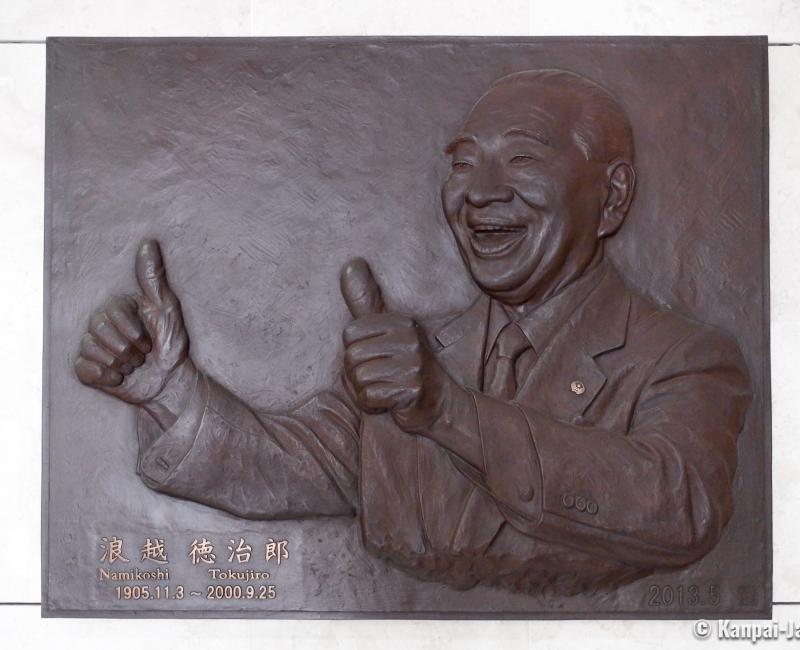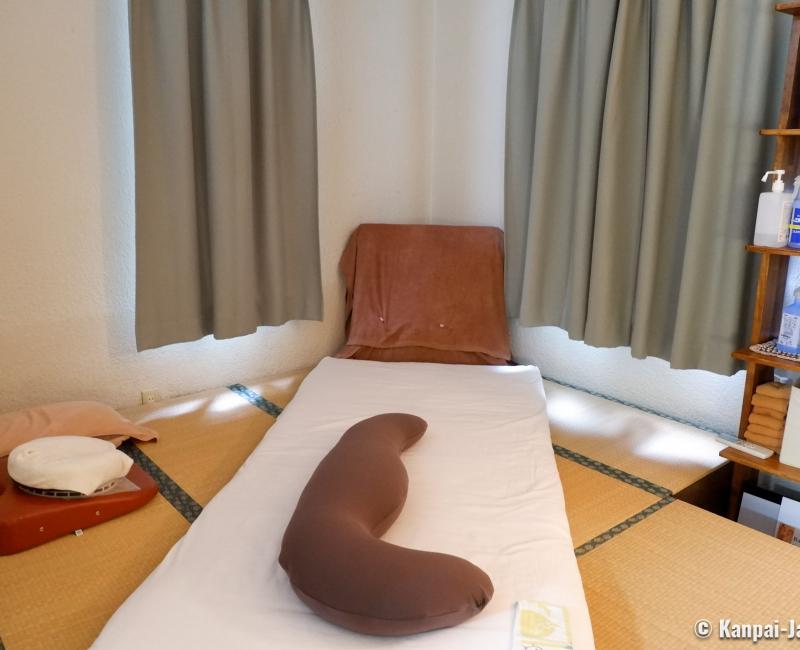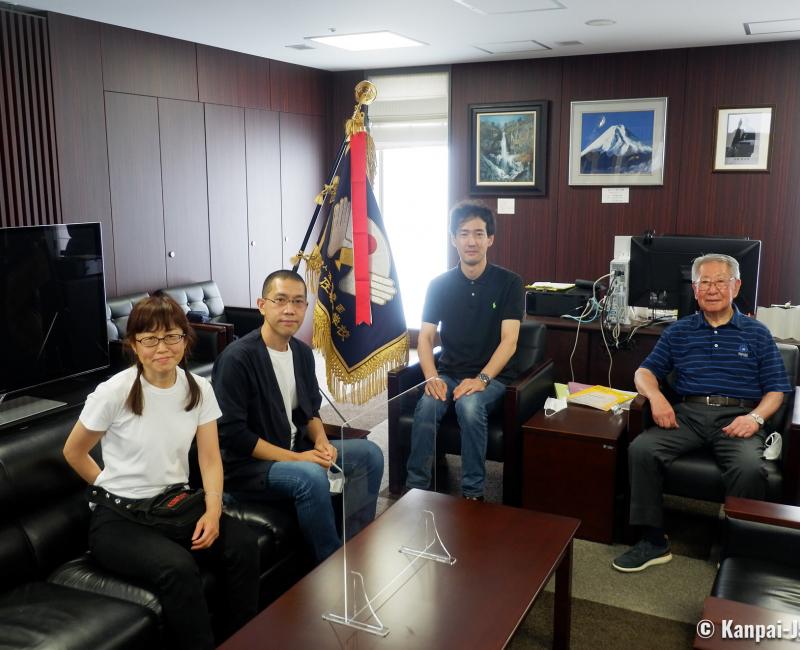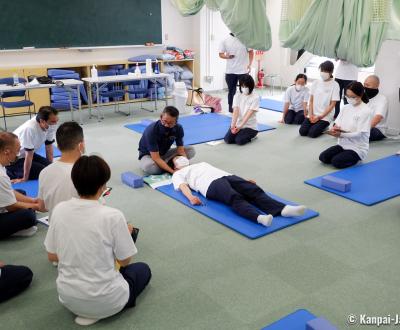Shiatsu
The Massage Therapy From Japan
Shiatsu is a Japanese medical technique born from Chinese medicine, that particularly developed since the early 20th century. It is performed by applying a variety of pressure with fingers on the patient’s body to heal them, stimulate their immune system or alleviate frequent symptoms.
The term shiatsu means "finger pressure" (指圧) and it was first officially mentioned in a Japanese medical publication in 1928. This therapeutic massage evolved from the Chinese medicine that prevailed in Japan for centuries, and consists in applying a pression with fingers, most of the time the thumbs, on specific places of the patient’s body called tsubo (ツボ). Depending on the shiatsu style they were trained in, shiatsu therapists may also use the palm of the hand, or other parts of their body. The principle of this alternative medicine is to improve the energy flow in the body along the meridians that were defined by Chinese traditional medicine.
The precursors of shiatsu
This medical art’s origins date back to the introduction of Kampo Chinese medicine in Japan, around the 7th and 9th centuries, and especially of the Tui Na technique. This type of Chinese massage uses the meridians and acupuncture points to unlock or stimulate the chi 気 energy.
Over time, Japanese practitioners assimilated and modified the technique to create anma massage (按摩), that flourished during the Edo period (1600 – 1868). Anma includes several types of massages, stretching, percussions or compressions, always based on the principles of Chinese medicine.
In the early Meiji era (1868 – 1912), the introduction of western medicine, based on physiology and anatomy, made the Japanese traditional medicine obsolete.
The rise of shiatsu in the early 20th century
The Japanese massage therapy nonetheless developed in the beginning of the 20th century, and if the word shiatsu was first used in 1928, the first medical establishment to offer this kind of treatment opened as soon as 1925, thanks to Tokujiro Namikoshi (1905 – 2000) who would eventually also use this term.
Shiatsu was recognized by the Japanese Ministry of Health in 1955 and spread in the world thanks to the efforts of its practitioners and teachers, and the highlight it received from treating celebrities such as Marilyn Monroe or Mohammed Ali. Nowadays, shiatsu has been recognized beneficial in illness prevention and well-being care in Europe and Canada, where many schools train 🚅 certified professionals.

Two great shiatsu styles in Japan
In the same way as martial arts, several styles of shiatsu practices developed. They often stem for the two current largest schools: Namikoshi shiatsu, whose name derives from its founder’s and is the most widespread in Japan; and Shizuto Masunaga shiatsu, also called Zen-shiatsu in the West, who was one of Namikoshi’s students. The two methods’ notable differences are:
- The exclusive use of fingers and palms for pressure in Namikoshi shiatsu. In Masunaga shiatsu other body parts can be used (elbow, knee, arm) and the patient’s body is undergoing more manipulations (stretching),
- Namikoshi shiatsu was voluntarily separated from Chinese medicine for access by the largest number of people. On the contrary, Masunaga reintroduced the traditional eastern medicine concepts and developed them in his practice,
- Western medicine, and especially chiropractic, was introduced in Namikoshi shiatsu.
The two schools are also different in the type of pressure they use, with the involvement of the therapist’s body weight. They do not use instruments.
What are the indications for shiatsu massage?
More than a simple wellness massage, shiatsu’s beneficial effects were recognized for:
- Everyday ailments (muscle pain, headaches, digestive disorders),
- Improving management of psychiatric troubles such as depression,
- Musculoskeletal disorders, joint pains,
- Gynecological troubles and discomfort.
Overall, a shiatsu session will have as an immediate effect the patient’s relaxation, with a diminution of pain and, when administered on a regular basis, a stress reduction fostering well-being over the long term.
Everybody can receive a shiatsu massage: athletes, even when practicing at high level, elderly people, or busy individuals.
What to expect in a shiatsu consultation in Japan?
In Japan, shiatsu is a medical practice. It is not dangerous, however, it is important to note that contraindications to shiatsu massage do exist, and namely:
- Infectious diseases,
- Conditions due to inflammation, such as appendicitis, peritonitis, etc.,
- Bleeding risk, contagious skin diseases, bone fractures, etc.
This list is not limited to these examples: before booking an appointment for a shiatsu massage and if there is any doubt, check with your usual general practitioner about possible contraindications.
At a medical shiatsu office
Like any physician, the shiatsu therapists receive their patients in a place dedicated to consultation and treatment. We were lucky enough to try a Namikoshi shiatsu session at the invitation of Megumi Okubo, therapist and manager of Megumi Shiatsu Clinic (めぐみ指圧治療室), in Nakano ward in Tokyo. Megumi is fluent in English, which helps a lot during the consultation.

First, a short medical examination is performed to know the patient’s condition and medical history, with a standard questionnaire during about fifteen minutes.
The massage per se can last up to 90 minutes. The shiatsu office provides a lightweight clothing, akin to a comfortable pajama for the patient to wear during massage. Then, patient is lied down on a futon spread on a tatami mat and surrounded by cushions that will be used during the session, in a large room immersed in a soothing lighting and soft music.
During the treatment, the therapist massages the body’s pressure points from head to toes. Limbs are stretched, and the body moved several times, with cushions used as supports when necessary. The body heats up thanks to the improvement of blood flow, the well-being feeling is immediate at the end of the session and even lasts for a few days.
At Japan Shiatsu College
Japan Shiatsu College was founded by the creator of Namikoshi shiatsu, Tokujiro, in 1940, in Korakuen area (Bunkyo ward in the heart of Tokyo) where the school is still operating today. This specialized graduate school is still managed by Namikoshi family, and it is the only one in Japan to exclusively train shiatsu therapists.

The teachings are performed in the oldest of the two buildings, more precisely in a large tatami room fitted with mattresses. Students of all ages are shown the therapeutic gestures while attentively taking notes and listening to their professor. Then, working in pairs, students immediately practice on each other the gestures they were just taught.
From their third year, students can practice in "real conditions", with "real patients" who receive a 90-minute shiatsu massage in exchange of a small participation fee (¥500 / ~US$3.17). The patients thus benefit from a pleasant and affordable discovery of shiatsu.
On the ground floor of the same building, the Treatment Center welcomes patients for a shiatsu session (upon reservation) performed by certified therapists.
School dean Kazutami Namikoshi kindly met us in his office, located at the last floor of the newest building. The many pictures, prizes and decorations that are displayed in this room, and some others of the school, are testimony of the importance of shiatsu and how it went a long way since its beginnings with Tokujiro, one of the pioneers of the discipline. He talks with pride and passion of Japan Shiatsu College’s history and celebrities who received treatment here, such as famous boxer Mohamed Ali who was treated by Tokujiro himself.
Shiatsu, and especially Namikoshi shiatsu, is open to everyone. Tokujiro Namikoshi considered that massage could help strengthen bonds between human through a simple care that even the youngest ones could perform. As a matter of fact, the legend has it that Tokujiro treated his sick mother thanks to acupressure when he was 5 years old and that it is how he discovered this therapy. According to Tokujiro, the sense of touch has beneficial effects both on the patient and the therapist, a thought embodied by the joyful statue of him thumbs up in the grounds of the school he founded in Tokyo.

